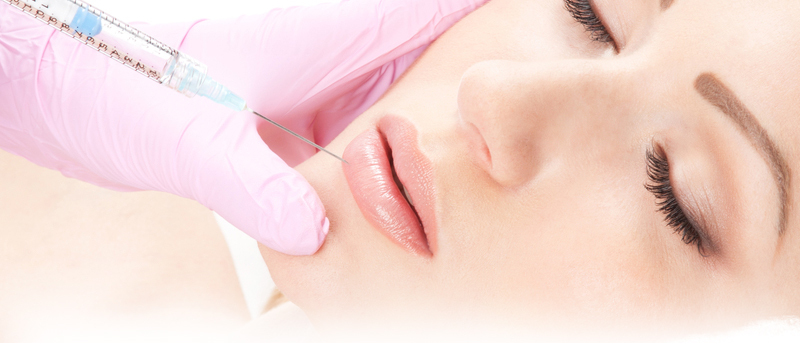Dermal Fillers Q&A

Redeem Clinic
Common Questions
1. What are Dermal Filler?
2. How Dermal Filler work?
3. Do Dermal Filler injections hurt?
4. Where can Dermal fillers be injected?
5. How long do Dermal Fillers Last treatment last?
6. How safe are Dermal Fillers?
7. What is needed in terms of Aftercare?
1.What are Dermal Filler?
Dermal fillers are a collagen material made of synthetic or often natural substances. The fillers are injected into the dermis layer of the skin for the purpose of augmenting soft tissues. Dermal fillers have had a significant rise in their application over the past ten year due to aesthetic reasons, namely they help correct skin conditions which develop as a result of ageing such as creases, folds and wrinkles. Dermal filler can also be used to enhance the lips and cheeks
2.How Dermal Filler work?
Dermal Filler proprietary component is Hyaluronic acid. This is a naturally occurring substance found in humans and animals. It gives the skin its plumpness and as we age it decreases, contributing to the ageing process. It also acts as a humectant which means that it attracts water so can be used to rejuvenate the skin and restore volume. Derma Fillers use a synthetic form of Hyaluronic acid with very low instances of allergic reaction. Dermal filler ultimately act as a ‘plumpling’ agent within the skin. They technically work as replenishment for the natural collagen which has been rendered less effective during the ageing process. Dermal fillers are injected into the skin using fine needles. They can plump-up the area which has received the injection, levelling it with other areas of the skin and making it look plumped out, even and no longer sunken. Ultimately, the plumped up skin looks firmer, young and refreshed.
3.Do Dermal Filler injections hurt?
As with any needle procedure there can be some discomfort from time to time. A fully experienced and trained Doctor will usually have exceptional needle skills and aim to make the process as comfortable as possible. As well as the dermal filler itself containing ‘lidocaine’ (anaesthetic) a topical anaesthetic is also applied to the area of the skin prior to treatment, this gives a numbing effect to the treatment area and greatly reduces any discomfort.
4.Where can Dermal Fillers be injected?
There are various forms of dermal filler, with varying quality, results and price. We look for use the best available products in the market and this is why we only use Juvederm Ultra in all of our applications. We use Juverderm Ultra for Crows feet, frown lines and vertical lip lines to give the ultimate in firm, natural skin re-balancing.
5.How long do Dermal Fillers Last treatment last?
Usually the most balanced results start to appear after the first 48hrs, you can then expect the beneficial effects of the Juverderm Ultra to last for 6-12 months. Obviously being a temporary treatment, patients should make sure to have repeated treatments after the standard period of 12 months.
6.How safe are Dermal Fillers?
There are a few issues and problems with dermal fillers but these are in general very uncommon, even rare in places. Although dermal fillers are regarded as a safe aesthetic procedure, it is worth always consulting your treatment Doctor on the matter, as any possible side effect and possible issue can be resolved with proper technique and professional experience of the aesthetic practitioner/surgeon. If you have any known allergies or you take any medicine or have a condition which makes you more sensitive to the procedure it is very important you consider the risks before having the treatment. Blood thinning medicine such as warfarin can also cause issues during the procedure and should as such be reported to the aesthetic practitioner/surgeon. With a competent Doctor who holds all the personal information needed your dermal fillers treatment should be completely risk free. Some of the most common side affect of the treatment are shown below:-
- Immediate redness, swelling, burning and itching around the treatment site are COMMON and should settle within the first few hours
- Bruising and swelling lasting up to 2 weeks are LESS COMMON and should resolve spontaneously
- Slight blue discolouration of the treatment area is LESS COMMON
- Cold sores may RARELY erupt following lip augmentation – this should be treated with Zovirax cream from the pharmacy
- Tissue infection / abcess is RARE and can be treated with antibiotics
- Granuloma (tissue nodules) are VERY RARE and can be treated with injection of steroid into the affected area
- Tissue necrosis (sores) is VERY RARE and usually resolves
- Hypersensitivity / allergy is VERY RARE and can be treated with antihistamines
7.What is needed in terms of Aftercare?
- AVOID wearing makeup for up to 12 hours.
- AVOID sun, as well as saunas and steam rooms, for 2 weeks.
- AVOID any additional forms of treatment in the treated area for the next 7 days
- DO NOT rub, massage or stroke the treatment areas – this can spread the product increasing the risk of complications and uneven skin balance and as the skin has been broken by needles there is a risk of infection
- AVOID very strenuous physical exercise and activity
- AVOID alcohol, aspirin and ibuprofen for 24 hours which can increase the risk of stronger bruising and swelling












